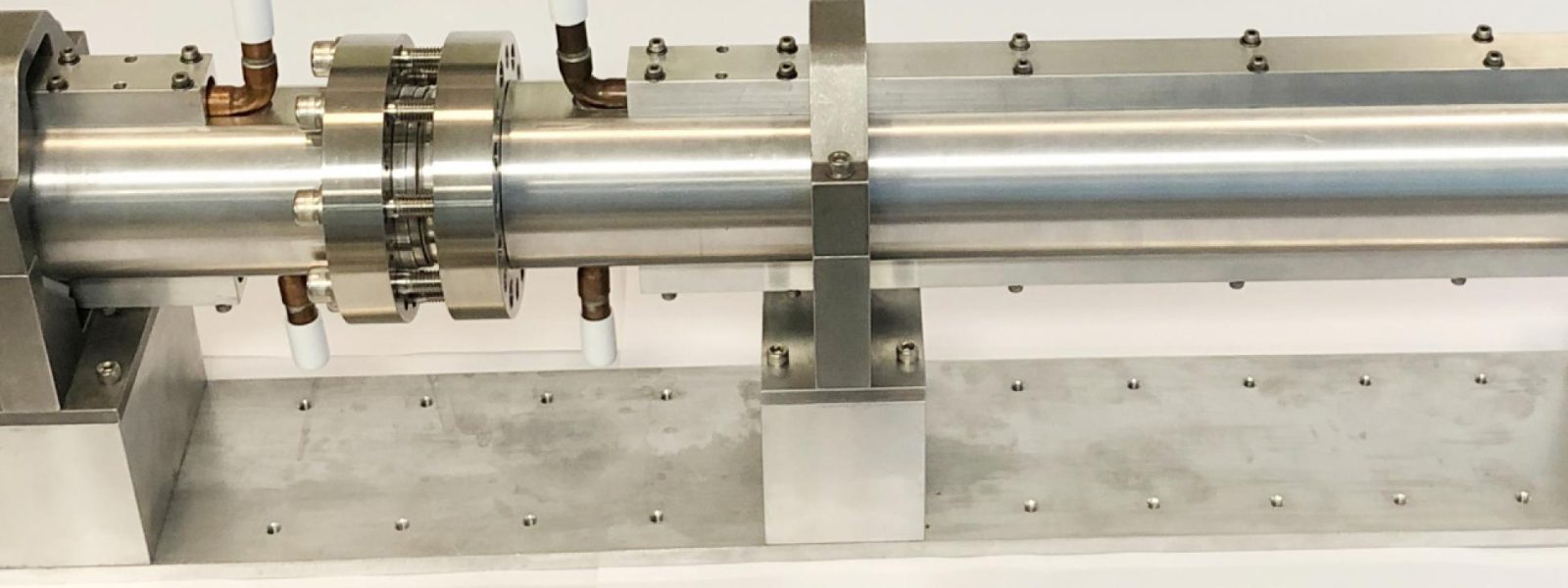After several years of design analysis, prototyping and strict attention to complex structural demands, the US ITER electron cyclotron heating line team completed a final design review of transmission lines for the microwave plasma heating system. The team is now preparing for initial fabrication contracts.
“Our thermal mechanical analysis at the system and component level were top notch,” said US ITER team lead Kurt Vetter. “The prototyping validated that we could achieve those tolerances and be aligned with the analyses of the transmission line components. We clearly showed this during the review.”
In a first for US ITER, the final design review was completed entirely remotely, a necessity due to travel restrictions related to COVID-19. Over 50 people from across the global ITER fusion project participated in the review. The international project is under construction and rapidly approaching the start of tokamak assembly.
“We were well prepared and, in the end, doing it remotely was not a factor,” said Vetter.
The microwave heating system includes over 4 km of transmission lines, plus components such as switches, bends, couplings and bellows. The system will provide 20 MW of heating power to the ITER plasma. A major challenge of the design is assuring that minimal power losses, or microwave mode changes, occur along the length of the transmission lines. The ITER performance requirements have never before been achieved on transmission lines of this length or power.
Senior project engineer Greg Hanson noted that there were multiple areas of improvement as the team prepared the final design, including demonstration that a 50 mm diameter transmission line was optimum for microwave performance.
As the team moves into fabrication, a major early effort is focused on establishing a reliable manufacturing process for the transmission lines, which will mostly be produced in three meter lengths. Inside the aluminum transmission line, finely specified corrugations will serve as guides for the microwaves to move along the lines.
The team also established that structural supports for the lengthy system are a critical part of optimizing transmission line performance. The transmission lines traverse three buildings at the ITER facility—each of which have their own foundations and seismic requirements.
“Because of the sensitivity of electron cyclotron transmission line performance to additional components, which can add gaps to the line, we had to find a very specific balance to locate additional couplings or bellows without degrading microwave power modes,” said Zach Wolfe, a project engineer who led the structural design and analysis effort.
To achieve a burning plasma, a key step for fusion energy development, the ITER tokamak will rely on three forms of plasma heating: neutral beams for bulk heat, with supplemental resonant heating by ion cyclotron heating, and electron cyclotron heating for depositing heat in specific locations during all phases of a plasma pulse. Through a switching system, the electron cyclotron transmission lines can direct power to upper launchers, in order to target power deposition, or to equatorial launchers for general plasma current drive or even counter-current drive. The system can also be used to accelerate or decelerate plasma current.
The total electron cyclotron heating system is a deeply international effort, as the European Union, India, Russia, and Japan are also contributing components, including power supplies, gyrotrons, and launchers for the system.
US contributions to ITER are sponsored by the U.S. Department of Energy Office of Science and managed by UT-Battelle at Oak Ridge National Laboratory in Tennessee, with contributions by partner labs Princeton Plasma Physics Laboratory and Savannah River National Laboratory. For more information, see https://usiter.org. The Office of Science is the single largest supporter of basic research in the physical sciences in the United States, and is working to address some of the most pressing challenges of our time. For more information, please visit https://science.energy.gov.
Media Contact: Lynne Degitz
